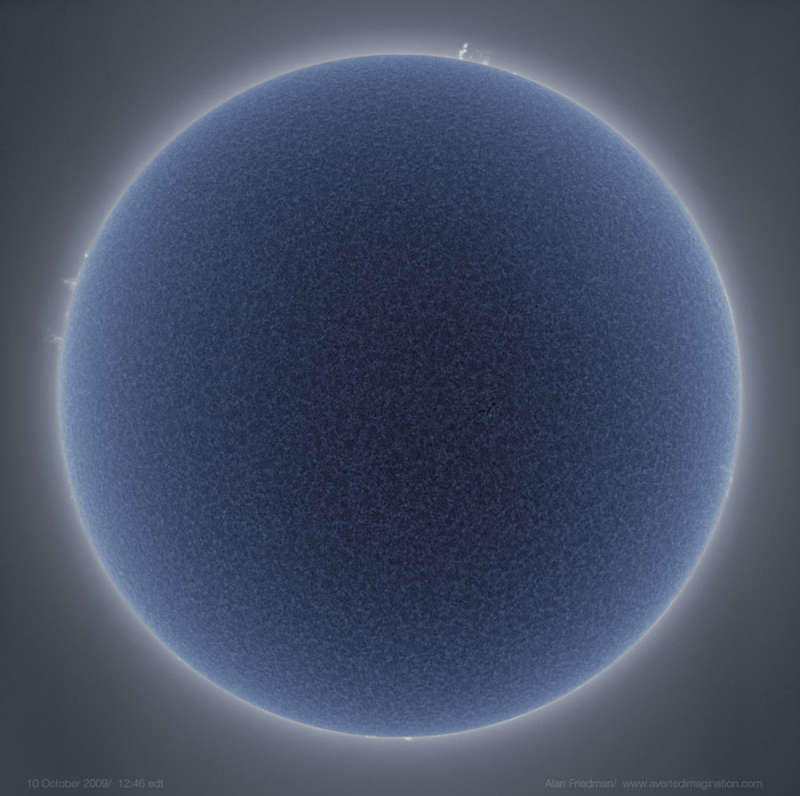
|
Credit & Copyright: Alan Friedman
(Averted Imagination)
Explanation:
Our Sun may look like all soft and fluffy, but it's not.
Our Sun is an
extremely large ball of
bubbling hot gas, mostly
hydrogen gas.
The above picture of our Sun was taken last month in a
specific red color of light emitted by hydrogen gas called
Hydrogen-alpha
and then color inverted to appear blue.
In this light, details of the Sun's
chromosphere are particularly
visible, highlighting numerous thin tubes of
magnetically-confined hot gas known as
spicules rising from the Sun like
bristles from a shag carpet.
Our Sun glows because it is hot, but it is
not on fire.
Fire is the rapid acquisition of oxygen,
and there is very little
oxygen on the Sun.
The energy source of our Sun is the nuclear
fusion of hydrogen into
helium deep within its core.
No sunspots or
large active regions were visible on the Sun this
day, although some solar prominences
are visible around the edges.
|
January February March April May June July August September October November December |
| |||||||||||||||||||||||||||||||||||||||||||||||||||||||
NASA Web Site Statements, Warnings, and Disclaimers
NASA Official: Jay Norris. Specific rights apply.
A service of: LHEA at NASA / GSFC
& Michigan Tech. U.
Based on Astronomy Picture
Of the Day
Publications with keywords: Sun
Publications with words: Sun
See also:
- APOD: 2025 December 7 Á The Sun and Its Missing Colors
- APOD: 2025 May 21 Á International Space Station Crosses the Sun
- APOD: 2025 March 16 Á Venus and the Triply Ultraviolet Sun
- APOD: 2024 September 2 Á A Triangular Prominence Hovers Over the Sun
- APOD: 2024 August 18 Á A Solar Prominence Eruption from SDO
- APOD: 2024 August 4 Á Gaia: Here Comes the Sun
- APOD: 2024 July 28 Á Sun Dance
